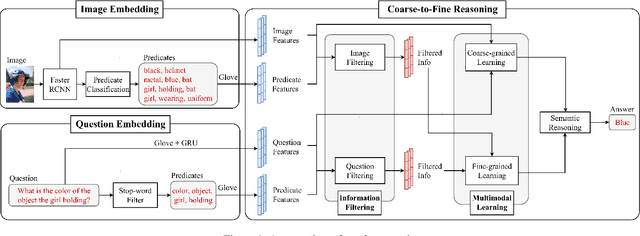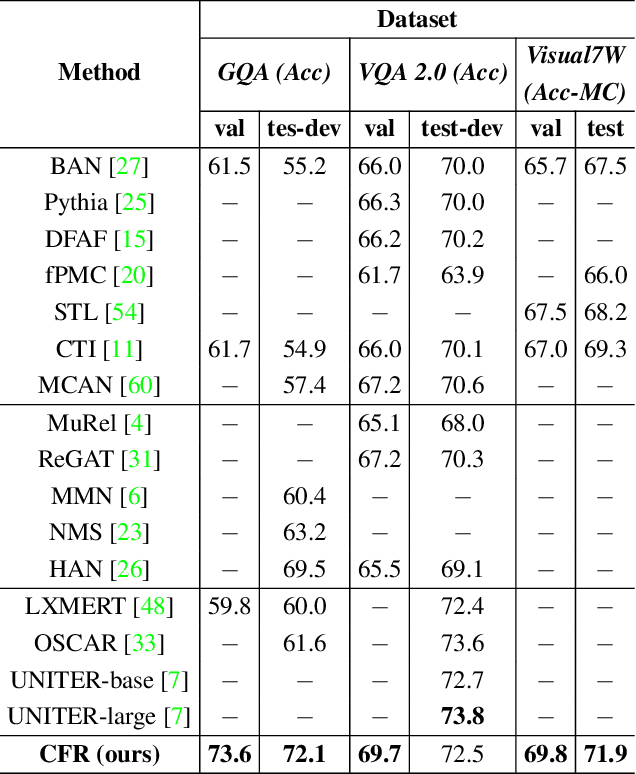Coarse-to-Fine Reasoning for Visual Question Answering
Paper and Code
Oct 06, 2021



Bridging the semantic gap between image and question is an important step to improve the accuracy of the Visual Question Answering (VQA) task. However, most of the existing VQA methods focus on attention mechanisms or visual relations for reasoning the answer, while the features at different semantic levels are not fully utilized. In this paper, we present a new reasoning framework to fill the gap between visual features and semantic clues in the VQA task. Our method first extracts the features and predicates from the image and question. We then propose a new reasoning framework to effectively jointly learn these features and predicates in a coarse-to-fine manner. The intensively experimental results on three large-scale VQA datasets show that our proposed approach achieves superior accuracy comparing with other state-of-the-art methods. Furthermore, our reasoning framework also provides an explainable way to understand the decision of the deep neural network when predicting the answer.
 Add to Chrome
Add to Chrome Add to Firefox
Add to Firefox Add to Edge
Add to Edge